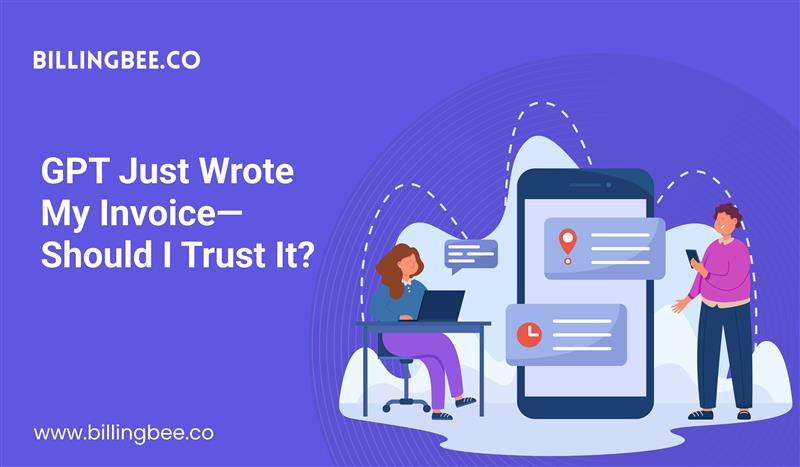GPT Just Wrote My Invoice—Should I Trust It?




There’s a strange, almost futuristic moment when you see an invoice appear on your screen, perfectly formatted, with your client’s details in place—yet you didn’t type a single word.
Instead, GPT (Generative Pre-trained Transformer) wrote it for you.
It feels like magic. But is it really safe to let AI handle something as critical as your billing?
Today, freelancers, small businesses, and agencies worldwide are experimenting with AI automation for their invoicing. The promise is tempting—save time, reduce manual errors, and focus on what you actually love doing. But like every shortcut in business, there’s a catch.
Let’s break it down.
The Promise of AI-Generated Invoices
AI tools like GPT can now draft invoices based on your prompts, project details, and even your past billing history. For example:
“Create an invoice for Web Design Project, Client: Horizon Agency, $2,500, due in 15 days.”
Within seconds, you have a clean, professional invoice—sometimes even better-looking than the one you’d make manually.
Benefits include:
- Time savings: No more formatting and repetitive data entry.
- Error reduction: AI can recall past client data accurately.
- Consistency: Every invoice looks professional and uniform.
It’s automation meeting elegance. But here’s where you need to pause.
The Hidden Risks of Letting AI Do It All
When GPT writes your invoice, it’s working from patterns in data—not from a real understanding of your client relationship, legal requirements, or your specific tax rules.
Potential pitfalls include:
- Incorrect Tax Calculations
AI may not know your region-specific tax laws. One wrong number could cause compliance issues. - Incomplete Legal Details
Your country may require specific invoice terms, tax IDs, or legal disclaimers—AI doesn’t always include them unless you specify. - Over-Personalization Risks
AI might insert unnecessary or overly casual language that feels unprofessional for business invoicing. - Data Privacy Concerns
Depending on the AI tool you use, sensitive client data could be processed or stored externally.
AI is fast—but speed without accuracy is dangerous in finance.
The AI + Human Hybrid Approach: The Smart Way
The safest way to use GPT for invoicing is not to let it run the show entirely. Instead:
- Draft with AI, Review as a Human
Let GPT create the skeleton of the invoice, but manually check all amounts, tax details, and due dates. - Use AI Inside Trusted Billing Platforms
Tools like BillingBee integrate automation while ensuring invoices meet compliance and security standards. - Feed AI with Clear, Complete Prompts
Be ultra-specific: “Include my business tax ID, payment terms (Net 15), 5% late fee clause, and USD currency.” - Never Skip a Final Approval Step
Treat the AI draft as a starting point—not a finished product.
So… Should You Trust GPT to Write Your Invoice?
The short answer: Trust, but verify.
GPT is an incredible assistant for speeding up your invoicing workflow, but it’s not your accountant, legal advisor, or billing manager. It works best when paired with human oversight and reliable billing software like BillingBee that ensures compliance and professionalism.
Think of it this way: AI is your fast, detail-oriented intern—but you’re still the manager who signs off before anything goes out the door.
The future of invoicing will likely be AI-assisted, human-approved—and those who adopt this balanced approach will save time, avoid costly mistakes, and maintain trust with clients.
AI in invoicing isn’t about replacing you—it’s about amplifying you. GPT can handle the repetitive, structured work while you focus on business growth and client relationships.
So yes, let GPT write your invoice.
Just make sure you read it before hitting Send.